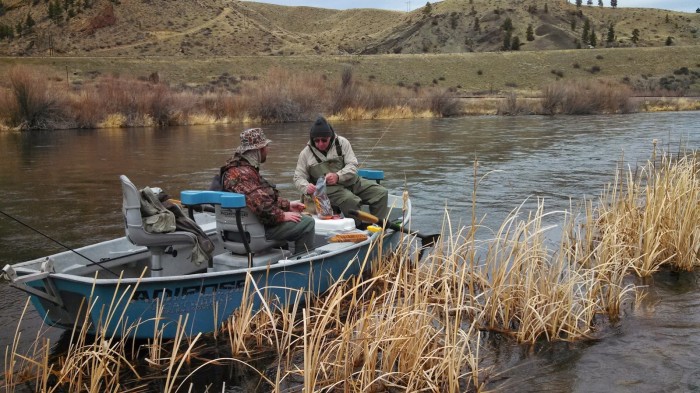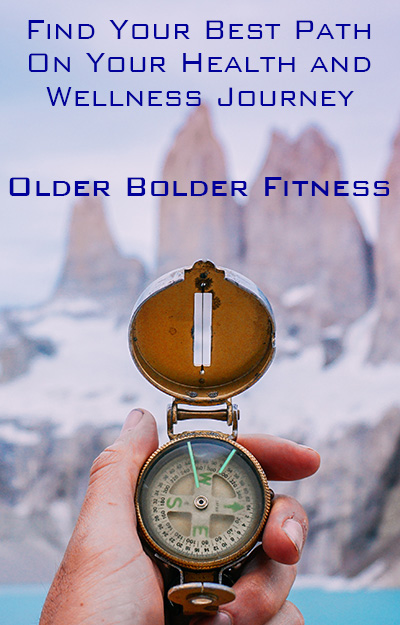
As long as I have been fly fishing I have had an uneasy relationship with drift boats. The first float-worthy river that I fished was the Green below Flaming Gorge Dam. Anyone who has fished there knows that the Green floats a lot of boats. As a wading fisherman, this fact was hard to ignore. Boats on the Green sometimes want the same water that a wader wants, and a never-ending flotilla of drift boats can get old quickly. Plus, let’s be honest, I was (am) a bit jealous of people fishing out of a drift boat.
Over the years my relationship with these floating fishing platforms has ebbed and flowed but remained tenuous. Several years ago I bought a small one-man pontoon and proceeded to navigate the Henry’s Fork a number of times. The chance to get away from the standard access points is nice, but fishing from the craft while drifting a river is nigh on impossible, at least for me. Still, the guides in the drift boats look at jokers like me with open disdain, which is kind of cool.
A couple of years ago a good friend bought a drift boat and I had the chance to float and fish and—occasionally, for a few short stretches—even row. This opened my eyes a little, but it wasn’t until I took a guided trip on the Mo that I started to wrap my head around all the subtle differences between fishing from a boat and fishing with your feet on solid ground. For me, the one-cast, 40-yard drifts through prime nymphing water that a bank angler couldn’t touch sealed the deal—I wanted a drift boat.
However, my wanting a boat means very little in the face of my life’s stark financial realities. So I am saving and hoping to purchase a good used boat someday (anyone got an RO Deville or an Adipose Skiff they are looking to sell cheaply?), but I wanted to scratch the itch a little more until my dream becomes a reality. So my brother and my dad and I headed up to Craig and rented a boat from Headhunters for a couple of days. And for the first time, I got to spend some serious time in the rower’s seat.
Here are a few of the things I learned:
- Guides (at least the Headhunters guides I have fished with in the past [Nick Stipech and Ben Hardy, for the record]) make rowing look a lot easier than it is. Controlling the speed and boat position was harder than I expected. Often by the time I got the boat in position and going the right speed for a good drift, we had missed a lot of good water (and a lot of fish). I got better at this over the course of two days—until the wind blew a gale on the afternoon of the second day and keeping the boat in position became truly impossible for a mere novice. As the wind blew us all over the place, I remembered Ben Hardy making rowing in the wind seem pretty darn easy.
- A drift boat is a small place for three grown men, especially when the guy rowing doesn’t know what he is doing. It may be that we are family, but my brother, my dad, and I had to remember to bite our tongues occasionally and just enjoy the ride. I had some flashbacks to my first college apartment, which was something like 500 square feet and housed six 18-year-olds who had never lived away from their mothers. Those two days in the boat we had to learn how to deal with things like: poor oar strokes, casts that invaded the front or back angler’s territory, deciding how to approach that next riffle (without really knowing how to row), anchoring up for another angler’s bird’s nest, and whether a whitefish counts in the fish total that signals a change in the rower’s seat (yes, if I am rowing; no, if I am fishing). The good news is that we are all still on speaking terms.
- It is nice having a cooler full of cold beverages within arm’s reach at all times.
- While a drift boat angler may have the whole river to fish to (theoretically), you only get one cast. As a career wading angler, this was a new mindset for me. Drift boat fishing has no time for the past. Its motto: look ahead and cast downstream—there are no second chances. Of course, there are exceptions. We anchored up and I caught 21-inch brown on my second cast to the one rising fish we saw. And we participated in the time-honored tradition of rowing back upstream (what Mark from Headhunters calls the “circle jerk”) for another drift through some of the best runs. Still, for the most part, all that water is under the boat and past you in a blink. There is no time for second thoughts.
That last item is for me an illustration of why I want to buy a drift boat: because there are no second chances. I have two daughters. I can close my eyes and see them now sitting together in the bow seat of a drift boat shrink-wrapped in life vests. And I can just as easily imagine them as teens standing and fishing from the front and back, telling me to get the boat closer to the shore so they can reach a rising brown. I can imagine camping trips on river islands and days spent with good friends anchored up and casting to risers on the Henry’s Fork or the Mo. I can envision quiet floats with my wife years from now or next week. Are these things required for a full fishing life? Probably not. I will always be a wade fisherman in my guts; I have derived great pleasure from fishing that way and that is the way I am teaching my kids to fish. But I still want to experience life with a drift boat, just like we wanted to fish that run coming up on river left as we floated down the Mo. So I am trying to get into position, trying to get the speed and the timing right so that we can get the flies in front of the fish. I want to make the cast before too much water slides under the boat and is gone forever.
One more thing I learned on the Mo: I am going to have to teach those girls to row so that I can fish a little.

